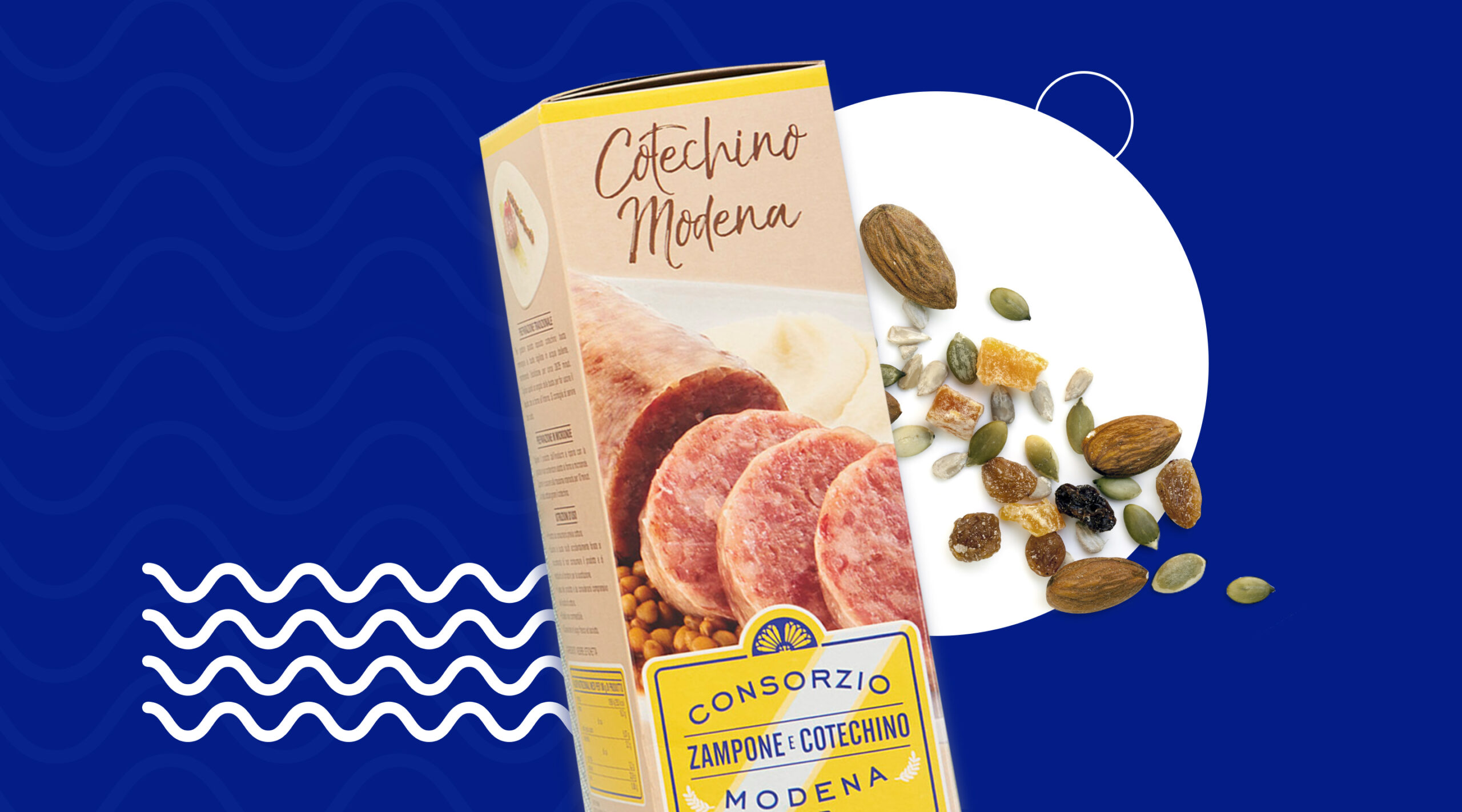
THE HISTORY OF COTECHINO MODENA PGI
“Once upon a time, 500 years ago, near Modena…”
A battle between the papacy and the ancient Signoria of the Mirandola, a small town under seige and the need to preserve precious pork meat to prevent it being pilfered by the invaders…
Whilst the hazy origins of Cotechino Modena intermingle history and legend, there can be no doubt that its fame soon spread far beyond the boundaries of Modena to seduce the palates of famous personages such as composer Gioacchino Rossini.

PRODUCTION
Cotechino Modena PGI is made from a mixture of pork meats, rind, salt and whole or crushed peppercorns. It may also contain wine, water, natural aromas, spices and herbs, according to the traditional recipe.
The resulting mixture is stuffed into a natural or artificial casing.
The pre-cooked product is packed in an airtight bag and undergoes a high temperature heat treatment to preserve its flavour and aroma.
Instead, the uncooked product is dried in hot-air ovens. To fully appreciate its organoleptic properties, it requires lengthy cooking before acquiring the typical flavour, pinkish-red colour and consistency of Cotechino Modena, when it is cut and served.
Containing nothing but natural aromas, Cotechino Modena PGI is free of dairy products and glutamate additives.

NUTRITION FACTS
Cotechino Modena PGI is an ancient food speciality and, as such, comes with a number of old wives’ tales, such as the idea that it contains excessive fat, calories and cholesterol.
How to debunk these false myths? By referring to the latest nutrition charts!
From a New Year’s Eve dinner to an aperitif with finger food, it is always the right moment to treat yourself to a taste of Cotechino Modena PGI!


NUTRITION CHART
| 1993 | 2011 | |
|---|---|---|
| Energy | 319 Kcal | 253 Kcal |
| Proteins | 21,4 | 23,6 |
| Carbohydrates | n.d. | 3,2 |
| Fats | 25,9 | 16,3 |
| - of which saturated | 8,48 | 5,09 |
| Cholesterol | 95 | 86 |

